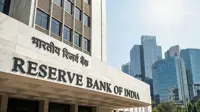India to route all govt purchases through Amazon-like marketplace
02 Dec 2016
 Prime Minister Narendra Modi plans to move all government purchases, from paper clips to power plant turbines, to an Amazon-like online marketplace that could eventually be worth a fifth of the country's $2-trillion economy.
Prime Minister Narendra Modi plans to move all government purchases, from paper clips to power plant turbines, to an Amazon-like online marketplace that could eventually be worth a fifth of the country's $2-trillion economy.
According to a Bloomberg report, the Modi government, which on 8 November announced a sudden decision to replace 86 per cent of India's cash in a bid to cut corruption and move to a cashless economy, has much riding on the new online market, which has already traded Rs39 crore ($5.7 million) since it began in August.
"This provides India an opportunity for transformation,'' said Rita Teaotia, the top bureaucrat in India's commerce ministry. "The transparency and competitiveness it has brought is very encouraging and so far we've seen that the government's savings are at least 10 per cent on every transaction."
The portal is expected to support trades worth 20 per cent of India's GDP once all state governments, state-owned companies, utilities, defence and railways come online, said Vishal Singh, additional director at the National e-governance division, which set up the platform.
But with only 20 per cent of Indians able to access the internet, the government, India's biggest employer, faces the challenge of training staff across the country to use the digital marketplace. Departments as diverse as finance, municipal corporations, police, hospitals and post offices, some located in villages where regular power failures make internet access difficult, are expected to be involved.
It is designed to leave a digital trail that will allow unprecedented openness in a nation ranked 76th on Transparency International's 167-nation corruption index. Bureaucratic delays and corruption were cited as among the biggest obstacles to business in India by the World Bank's 2014 Enterprise survey.
The e-market is at the centre of Modi's key reforms, 'Digital India,' aimed at increasing the ease of doing business in the notoriously red tape-heavy country, 'Make in India,' which seeks to boost the domestic manufacturing industry, and demonetization, which is attempting to tackle unaccounted cash and corruption. Modi, whose cabinet assigned $16.5 billion in December 2014 for a three-year digital push, needs the plan to sustain India's 7 per cent-plus growth rate.
Training, Learning
At the National Institute of Financial Management on the outskirts of India's capital, Ram Niwas Sharma and his fellow students are among the weekly batches of state employees learning to use the government e-market.
''It's a lot like Amazon.com,'' says, 54-year-old Sharma employee of a state-run engineering college in New Delhi. ''And it's much easier compared to our current system, more transparent.''
The platform isn't very different from Amazon or its local rivals Flipkart or Snapdeal in look or design, allowing users to choose from products listed alongside photos and detailed specifications. It even allows them to compare prices offered on the marketplace with those on rival websites. What differs, though, is the scale and scope of change it can bring.
The Indian government currently uses a tender system to buy everything from paper and cars to defence equipment. This restricts buyers to local suppliers and allows possible price manipulations or cartelization, according to Binoy Kumar, top bureaucrat at the Directorate General of Supplies and Disposal that handles state purchases worth Rs10,000 crore in a fiscal year.
The new system allows vendors across India to bid for any government purchase. India's finance ministry changed rules to allow payments within 10 days of the purchase, a move that will free suppliers from the average wait of about two months for recoveries or harassment from corrupt officials.
''Allegations of petty corruption won't arise,'' Kumar said in an interview. ''Especially since you're not restricting anyone from registering. We're democratising the entire process.''
Biometric Data
For 46-year-old Rajesh Kohli, who works for a Delhi state hospital, buying on the website frees up time but raises fears of misuse of his biometric data.
Everyone using the portal is required to register their personal mobile phone numbers and Aadhaar biometric cards. Aadhaar, issued by the Unique Identification Authority of India, captures personal details including fingerprints and iris scans. India's Supreme Court has prohibited the government from making the unique identity program mandatory and is currently hearing cases challenging its constitutionality.
''The system requires a personal vouch. That scares us,'' said Kohli. ''Earlier we acted on behalf of the department. Now it's our personal details for every purchase.''
But there is concern that the move will not be enough to stamp out the country's rampant corruption.
''India will have to ensure security of the huge amounts of data this will make available and we're not sure the government is fully aware of the pitfalls,'' said Rama Nath Jha, Delhi-based executive director, Transparency International India. ''Also, given the confusions created by demonetization, it would be naive to believe that merely digitizing purchases will cut corruption.''
The market's user base is expected to eventually rise to about 200,000 buyers making 5,000 concurrent trades. It already has 1,259 vendors selling 2,534 products through to more than 9,108 users across 469 registered government departments, according to Radha Chauhan, chief executive officer at India's national e-governance division. It is not yet compulsory for departments to join, she said.
India's biggest state purchasers - the Ministry of Defence and Indian Railways - are yet to become part of the market.
"This experiment will put us on a par with nations like the US and South Korea," said Harsh Kumar, director National Institute of Financial Management, that trains Sharma and his colleagues. "If it is implemented on the scale it's being envisaged, no procurement system in the world will be as transparent and efficient as this one."






















